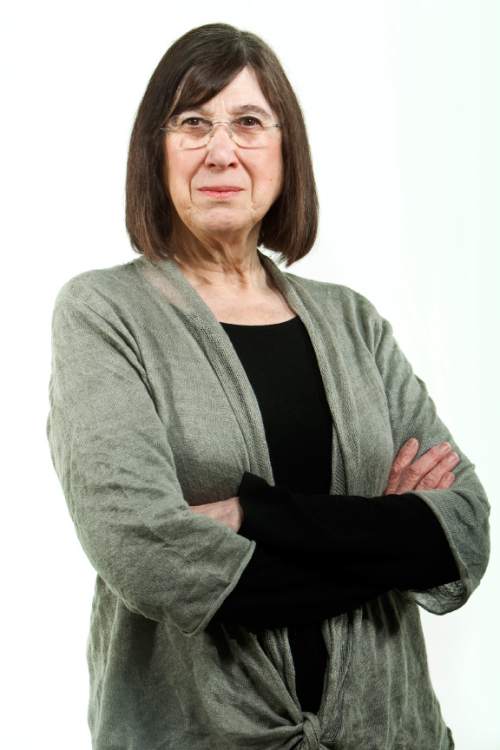This is an archived article that was published on sltrib.com in 2016, and information in the article may be outdated. It is provided only for personal research purposes and may not be reprinted.
In the late 1890s, a little known but earnest Utah woman named Emma J. McVicker strived to improve standards for education, women wage earners, disadvantaged children and politics.
A New York émigré who met and married her husband in Salt Lake City, McVicker taught music at the Salt Lake Collegiate Institute (which became Westminster College) and served as the school's principal until 1884. In 1883, she became the first president of the Orphan's Home and Day Nursery Association.
McVicker was fiercely protective of children and working mothers who considered their jobs a matter of "survival" and worked long hours for low wages.
In 1894, she joined a group of like-minded women leaders to create a free kindergarten for disadvantaged children. Called the Free Kindergarten Association, which evolved into the present-day Neighborhood House, the school also offered a day nursery run by nurses, home economics classes, and various club activities for children and mothers. Although many individuals supported the school, it would take years before it significantly changed Utah's long-held attitude toward working mothers.
In 1895, McVicker was nominated by Utah's Republican Party to serve as state superintendent of education. A court ruling that women could not vote because they were "ineligible to run for office" subsequently disqualified her.
McVicker was not alone. Ardent suffragists such as Lillie Pardee, a gentile who ran for the state Senate, and Mormon editor Emmeline B. Wells, nominated for the state House, also resigned under pressure.
During the Utah constitutional convention that began March 4, 1895, the issue of including women's suffrage — including the right to vote — in the state's new constitution was hotly debated and "bitterly fought."
According to historian Yvette D. Ison, opponents argued that including suffrage in the constitution "would make Utah a 'freak' state in the eyes of [those] states that opposed the franchise of women." It would also give fodder to many Utah voters who were averse to statehood.
Some insisted a woman's presence in the political arena would cruelly topple them from their "high pinnacles of virtue and purity," while others believed wives were represented by their husbands' votes.
On March 18, 75 Utah women suffragists of all faiths attended the conference and presented reasons for supporting political equity.
"They touched on the 'taxation without representation' theme and quoted Abraham Lincoln as believing 'women would someday wield the ballot to purify and ennoble politics,'" wrote Jean Bickmore White in "A Woman's Place is in the Constitution." The women reminded "the delegates that both political parties were on record pledged to woman suffrage."
On Nov. 5, 1895, "a new document was adopted," Bickmore wrote, "with a provision that 'the rights of citizens of the State of Utah to vote and hold office shall not be denied or abridged on account of sex. Both male and female citizens of this state shall enjoy equally all civil, political and religious rights and privileges.'"
Yet, when the proposal was put to male voters, women were not allowed to vote. According to Kathryn L. MacKay's "Women in Politics: Power in the Public Sphere," Sarah E. Nelson Anderson went to the Territorial Supreme Court "after a registrar refused to put her name on the voting list." She discovered "one-fifth of male voters had opposed the adoption of the constitution and women had not been enfranchised by the Enabling Act."
It wasn't until Utah joined the Union as a state in January 1896 that full women's suffrage was reintroduced into the state's new constitution.
In 1896, McVicker became a regent at the University of Utah, dispelling fears that suffragists could not manage or control educational institutions.
On Oct. 8, 1900, Utah's first governor, Heber Manning Wells, appointed her to serve as Utah's state superintendent by filling the three-month unexpired term of Dr. John R. Park, who had died.
Finally able to run for office, McVicker quickly issued a prospectus on ways to improve Utah education, clean up mishandling of funds, and ensure teachers' wages.
Eileen Hallet Stone, author of Hidden History of Utah, a compilation of her Salt Lake Tribune Living History columns, may be reached at ehswriter@aol.com. Sources: See MacKay, Murphy, and Clark and Scott's essays in Scott and Thatcher's "Women in Utah History"; White's chapter in UHQ, 1974; Lubomudrov's "A Woman State School Superintendent," UHQ, 1970; and Ison's essay in History Blazer, 1995.



